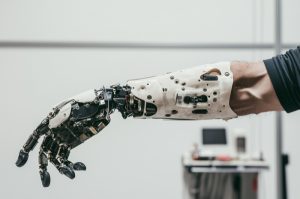
A pre-trained myoelectric control Random Forest model* that can be tuned using a small dataset for a new user and can classify the EMG signals in real-time with limited computer resources.
Application
Development Status
Technology validated
IP Status
Filed PCT application in 2025
Commercial Offering
The technology is available for licensing
Opportunity
University of Edinburgh researchers have innovated a novel myoelectric control system model based on the Random Forest machine learning algorithm. This advanced model shows exceptional adaptability and robustness, designed especially for applications in technologies like bioprostheses and VR. It distinctively addresses the common challenges of conventional myoelectric systems, such as signal variability due to muscle fatigue, electrode displacement, and varied user behaviour, which have historically limited the practical deployment of such systems.
With its capacity to pre-train, scalability up or down without significant loss in accuracy, and computational efficiency, this model sets a new standard in responsive and stable performance, dramatically enhancing user interaction with devices.
The self-calibrating feature of the model means that instead of deteriorating over time, its performance improves, maintaining a constant level of precision in long-term applications. This not only makes things easier for users but also improves the whole experience of interacting, paving the way for a new era in accessibility, user-friendly myoelectric control systems that seamlessly integrate into everyday life, making it an invaluable advancement for those reliant on such technologies.
Technology
Our technology is based on a self-calibrating RF model that can be initially pre-trained using data from plenty of users and then fine-tuned using just a single repetition for each gesture from the target user. The fine-tuned RF model can continue to self-calibrate during long-term use.
Our results based both on offline and real-time, open and closed loop, within a day and over longer periods, show the robustness of our model. We demonstrate how the model and user adapt to each other: the visual feedback can help users learn to perform hand gestures in a more efficient and less effortful way.
Benefits
Publications
Xinyu Jiang, Chenfei Ma, Kianoush Nazarpour, “Plug-and-play myoelectric control via a self-calibrating random forest common model”, J. Neural Eng. 22 (2025) 016029
Quote: TEC1104613
* A random forest model is a ML model that uses a group of decision trees to make predictions.

Technology Transfer Executive
School of Engineering
School of Informatics
School of Geosciences
School of Mathematics